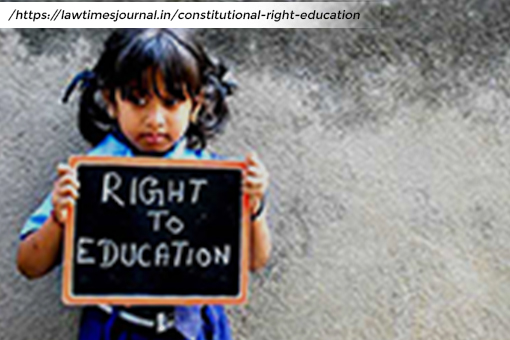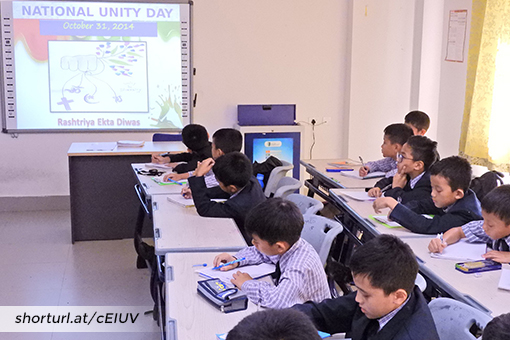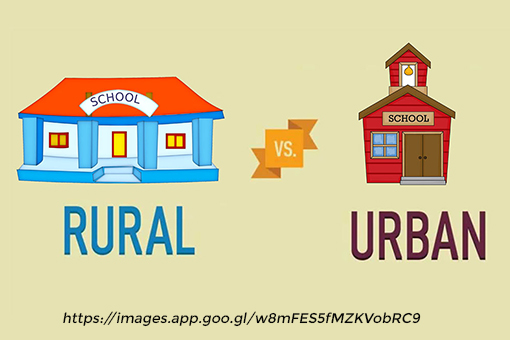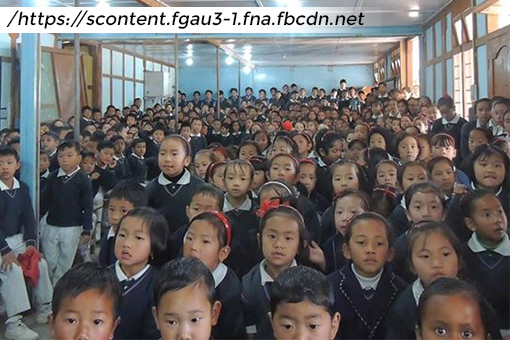Shaping the Bright Minds of Tomorrow: Education in Urban and Rural

Right to Education – Article (21A) in the constitution of India clearly states that it is the right of every child under 6 to 14 years of age to free and compulsory education.
As per the Annual Status of Education Report of 2017, about 25 percent of students in the age group of 14-18 years cannot read basic text fluently in their native language. The report also indicates that although the number of rural students attending schools is increasing, more than half of the students in fifth grade are unable to read a second-grade textbook and are not able to solve simple mathematical problems. In some states, the attendance of both teachers and students is in decline.

Education – A vital element in the development of a society
The importance of improving the literacy rate in a region cannot be stressed enough, as education plays an essential role in both enhancing an individual’s livelihood and collectively boost the growth of the society where the highest percentage of literacy is obtained.
A well-supported, easily accessible education system is an efficient means to make people economically stable, enabling active participation in a country’s economic prosperity and cultural development. As a matter of fact, the success of a nation rests (to a large extent) in its ability to sharpen the skills and talents of its ever-growing population, especially when it mostly comprises of youths.

Quality Education starts at Primary level
When it comes to shaping the bright minds of our nation, only making education accessible to all isn’t enough. Quality of education being imparted becomes a crucial factor in improving the overall quality of life – the first step towards bringing positive reforms in society.
The backbone of quality education is rooted in primary level schooling. This is where children are taught the basics which help them grasp advanced concepts with ease as they grow up. Implementation of primary level schooling in even the remotest corner of India, along with ensuring each student receives proper guidance in those initial years becomes fundamental towards achieving sustainable goals in the near future.

Education in Urban and Rural Areas
Several educational researchers across the globe have examined the contrast between rural and urban life scenarios. These studies also point out an academic edge that urban students have over their rural counterparts.
They have revealed that urban students often secure better grades than those students from rural regions. The factors that affect performance among rural students are lack of resources and limited opportunities available to them. On the other hand, the outstanding performance of urban students can be associated with better academic infrastructure and access to a wider range of information available across digital platforms.
Several challenges such as poor road connectivity, power shortage, poor internet connectivity, etc. in rural areas of India have amounted to students lagging behind, and are left with limited exposure from the world outside, hurting their knowledge on current affairs as well.

Addressing the education gaps between rural and urban areas in Arunachal
The difference between urban and rural students are not in terms of intellect, but due to their surrounding environment, learning ability, availability of infrastructure, skills, and access to different facilities.
Considering these factors, the curriculum for rural students must be curated. But it is also equally important to ensure that students are taught in a manner that is easily comprehensible in their given capacity.
Currently, the dominant task of primary education in India is to universalize compulsory education, especially in rural areas. On this note, let’s look at the ways we can upgrade primary level education in rural regions to close the gap.
Access and quality of education must go hand in hand
Quality of education rests upon its infrastructural facilities such as classrooms, water and sanitation facilities, availability of electricity, provision for digital learning, sports equipment and facilities, availability of chairs and desks, access to books and learning materials, among others. For this, Chief Minister’s Samast Shiksha Yojana was initiated to decentralized resources in a transparent and targeted manner such as by providing of furniture, electrical wiring, solar inverters or generators, laboratory equipment, Library purchases, sports equipment, etc.
Maintaining infrastructure
The current initiatives of having smart classrooms in public schools could go a long way in addressing this need with features and facilities like digital content, broadcasting classes conducted by experienced teachers, interactive classes through video conferencing, etc.
In this case, the Chief Minister’s Samast Shiksha Yojana will provide us with a flexible resource pool for the maintenance of schools and colleges. Another scheme, Chief Minister’s Adhunik pathshala Yojana is dedicated to establishing model residential schools in each district by upgrading the facility of existing secondary/higher secondary schools.
Quality of teaching and teachers
An efficient teacher brings about all the difference to a child’s education. Teachers are key to ensuring that students get the required readings that keep their minds kindled for seeking proficiency. In fact, students’ like or dislike attending classes or interests in a particular subject can be developed because of their teacher and his/her quality of teaching.
Because teachers play such a crucial role in influencing the quality of education absorbed by a student, experienced visiting faculties are to be hired from outside Arunachal Pradesh or from private institutions, to fill the need of quality teachers, especially for subjects such as Science and Mathematics under the Chief Minister’s Samast Shiksha Yojana. Also, meritorious students will also be admitted and taught by teachers of high competence using modern teaching methods under Chief Minister’s Adhunik Pathshala Yojana.
Digital aid: The introduction of technology to the classroom offers vast opportunities to enhance learning and improve data collection. Digital learning can also help develop critical thinking skills. For this, Chief Minister’s Adhunik pathshala Yojana has been initiated which will ensure the installation of smart classroom programs in 717 schools in the state with the provision of high-tech computer laboratories, laptops and free Wi-Fi for quality education at the primary level.
Government initiatives
At the end of the day, it is imperative that the government plays an important role in improving educational outcomes for both urban and rural students. Over the past years, we have seen priorities being set for empowering education to females all over the world, for the simple reason that girls deserve education no less than boys.
The Girl Hygiene Scheme aims to empower female students by providing sanitary napkins to adolescent girls on DBT Mode, and CM Vidya Scheme ensures Rs. 10000 to be deposited in every female student’s bank account who passes Class V.
Also, under Acharya Dronacharya Gurukul Yojana, meritorious students in class VI and class IX were given scholarships in the recent past. Similarly, career counseling facilities and a stipend of Rs. 5000 per month were given for science students studying outside Arunachal Pradesh. Under the scheme, 460 meritorious students were also given laptops to encourage them in the field of science in 2018. The scheme also promises 100% scholarship to meritorious students who seek to coach for civil service exams through ALS IAS academy at Itanagar.
Unique Learning
Last but not least, academic curriculums must also adapt to the needs of the learner, so that students are able to become the best version of themselves. On this note, academic textbooks and learning methodologies must be made interesting. For rural students, information related to their culture, traditions, and values can be incorporated into their textbooks to maintain their interest in studies.
To widen access to education, three pathways to learning should be considered, including formal, non-formal, and informal approaches. Also, career counseling should be provided to help students choose a field that is in sync with their skills and job expectations.

In conclusion, “Rural and urban schools are much the same when it comes to resources and learning environments” (EQR, 2003, p.45). But there are various variables that can affect individual students’ achievement. Enhancing the quality of education with career decision-making variables in both rural and urban sectors can considerably impact an individual’s ability to efficiently enhance individual well-being, become economically productive, develop sustainable livelihoods, contribute to peaceful, democratic societies and growth of employment opportunities.
“Quality without access will lead to inequality and exclusion; access without quality will limit the potential and would not bring [about] the desired results,” – Matthew Opoku Prempeh





